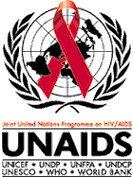

Sexually Transmitted Diseases (STDs) in Africa
Burden of Disease
The global burden of sexually transmitted diseases (STDs) is staggering and many developing countries are experiencing epidemic proportions of STDs with no sign of remittance.
In 1996, the World Health Organizations (WHO) estimated the global annual incidence of curable STDs (excluding HIV and other viral STDs) to be 333 million. Of these 333 million cases, 12 million are attributable to syphilis, 62 million to gonorrhea, 89 million to chlamydia, and 170 to trichomoniasis.Sub-Saharan Africa bears the largest burden of these new cases, responsible for 11 to 35% of all new cases of curable STDs. STD infections affect the most vulnerable populations--women, children, and youth. Among women between the ages of 15 and 44, STDs are the second leading cause of morbidity and mortality, following only maternal causes. Many STDs are asymptomatic and are therefore inadequately treated or left untreated altogether.
Lack of access to and resources for health care and treatment contribute to the growing STD epidemic. As individuals remain untreated, the potential to spread their infection grows, and they become more susceptible to long term complications. Untreated chlamydial and gonorrhea infections often result in pelvic inflammatory disease (PID), which can cause infertility. Pelvic inflammatory disease now accounts for 50 to 80% of infertility in Africa. In one study the World Bank concluded that the sum of days lost due to HIV, syphilis and chlamydial infection is nearly equal to the number of days lost due to malaria and measles.
Providing prompt and adequate treatment for curable STDs is one of the most cost-effective methods to improve world health, and can also significantly contribute to decreasing the HIV/AIDS epidemic.
The
STD/HIV Connection
The STD epidemic threatens to compound the HIV epidemic
currently ravaging much of Africa. Research demonstrates that the
presence of an untreated STD can cause a person to be three to five times
more likely to contract HIV. Further, an individual who is
infected with both HIV and a STD transmits HIV more easily. Providing
prompt and adequate STD treatment under specific conditions had demonstrated
a 40% decrease in the amount of heterosexually transmitted HIV.
Prevention
and Control of STDs and HIV
Stronger linkages between HIV and STD control programs
are needed to curb the current epidemics occurring in Africa. As
HIV and STDs are sexually transmitted diseases, they share common risk
factors, affect similar population groups and benefit from the same prevention
and behavioural interventions. A comprehensive STD/HIV control strategy
should include the integration of the two control programs.
Prompt and adequate and treatment of STDs can prevent HIV infection, and monitoring STD behaviours and patterns of infection can provide insight into possible trends in HIV infection. WHO recommends the following general outline for essential components of STD/HIV control programs:
promotion of responsible sexual behaviour general access to condoms promotion of early detection and treatment of curable STDs inclusion of STD management in basic health care including maternal and child health, family planning and other reproductive health services targeted interventions for people at high risk
Possible Role for RC/RCs
- Current Red Cross/Red Crescent (RC/RC) National Societies HIV intervention programs include promotion of condom use, information and education on HIV, blood donor counseling programs, peer education training programs, and home care treatment for HIV/AIDS victims.
- National societies are in a unique position to play a vital role in developing donor and community awareness and support for programs which address the STD and HIV epidemics jointly.
- National societies with successful HIV promotion and control programs for HIV have an opportunity to more fully integrate STD intervention activities, and thereby serve as a model for NGOs and the MoH.
For More Information
on HIV and STDs see:
World Health Organisation: http://www.who.org
UNAIDS: http://www.unaids.org/

